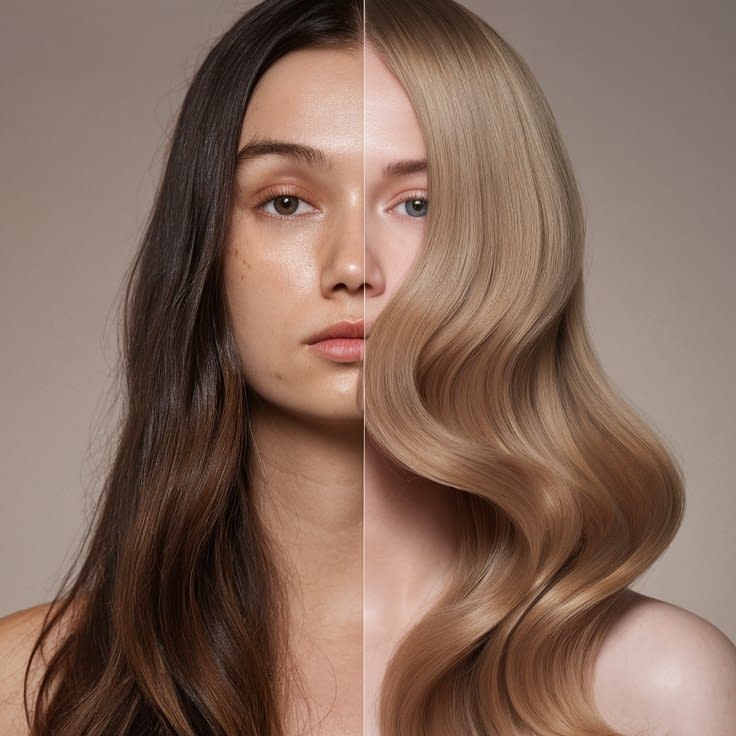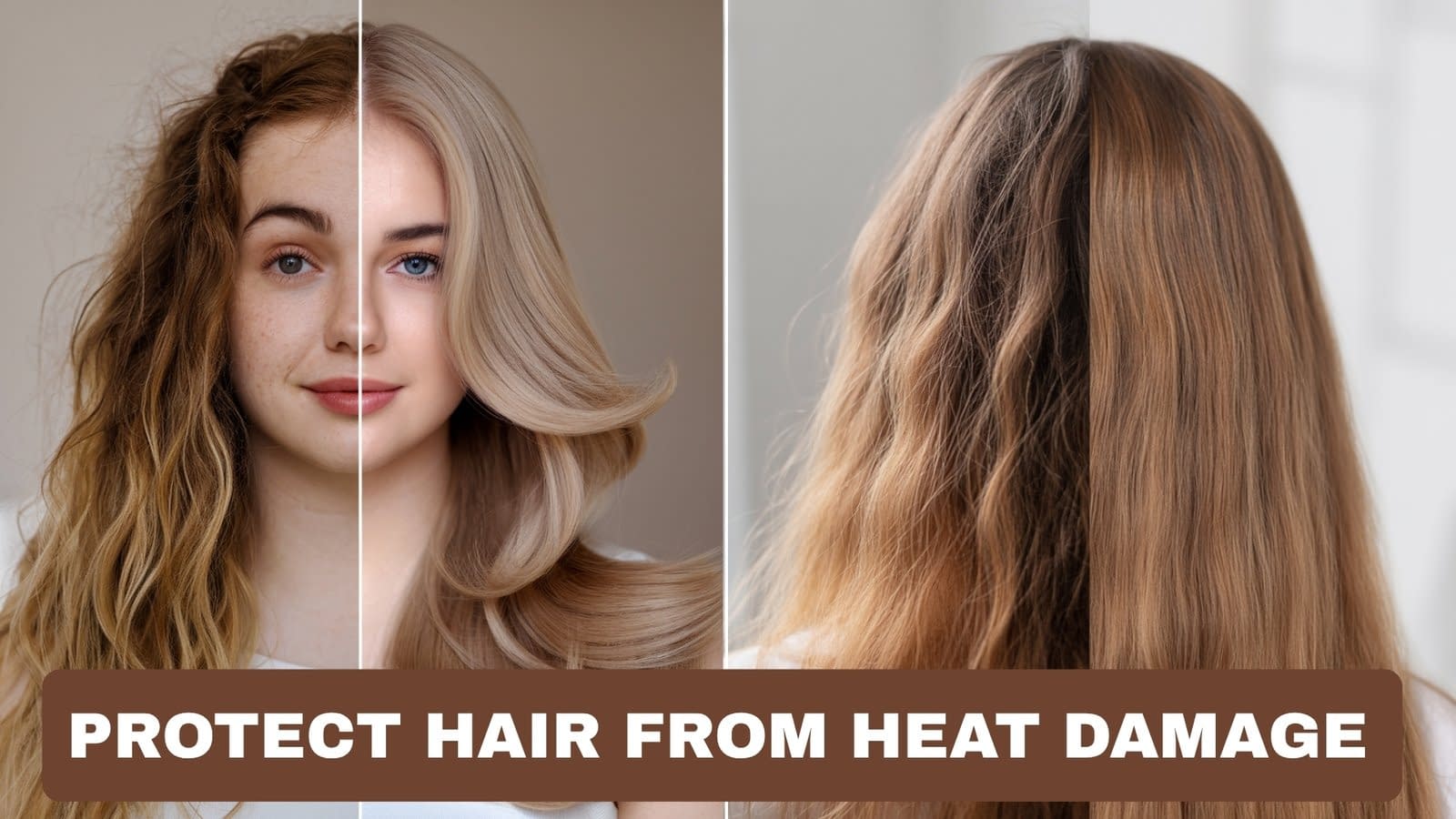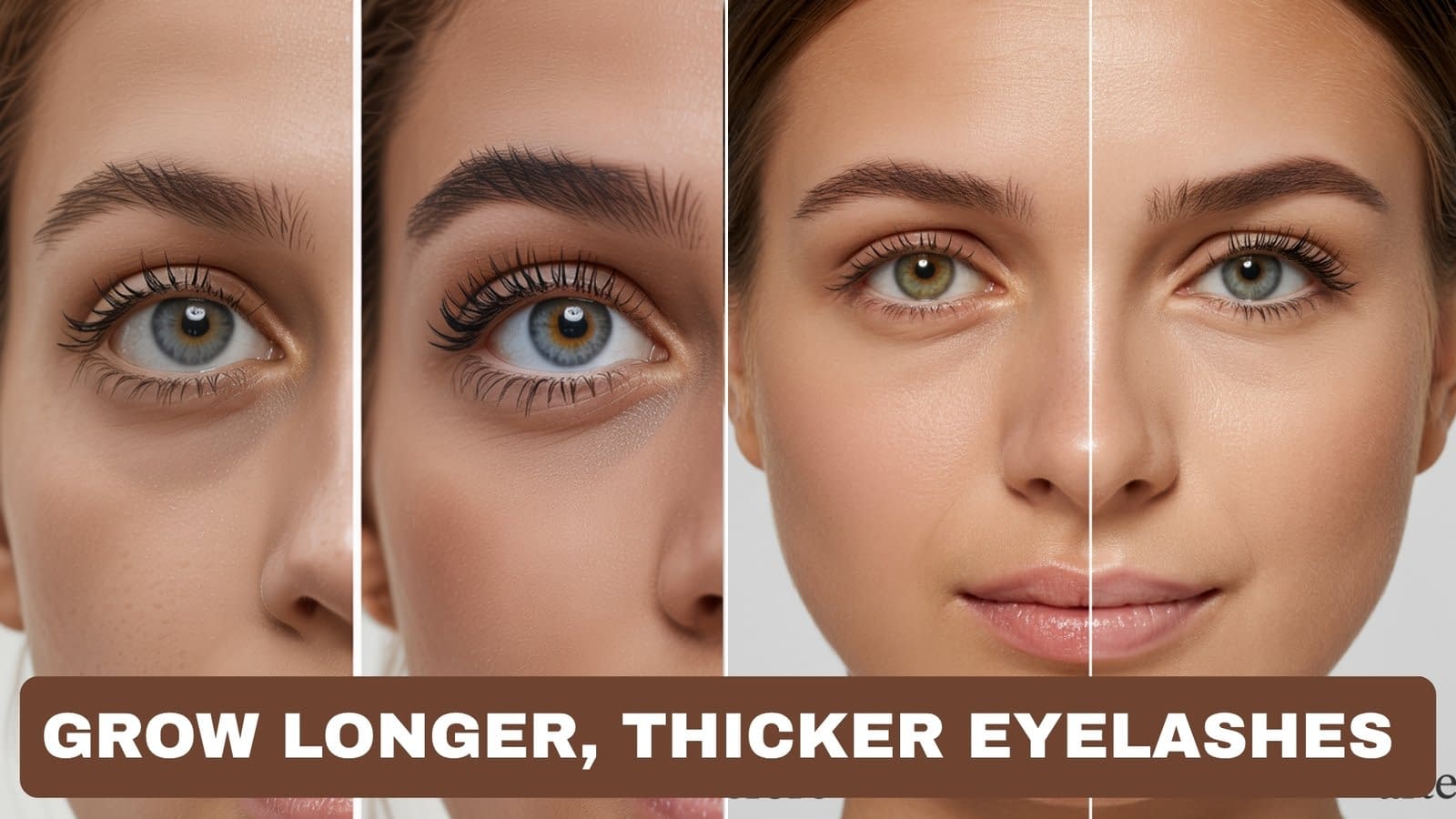If your roots go greasy a day after shampooing, it’s tempting to reach for the shampoo bottle every morning. But frequent, aggressive washing often makes oily hair worse: it strips the scalp, triggers rebound oil production and disrupts the scalp barrier. This long, practical guide shows you how to calm sebum production, refresh between washes, use smart, gentle routines, try safe natural remedies, build healthy scalp habits, and adopt lifestyle changes so you can go longer between shampoos without sacrificing fresh-looking hair.
You’ll get evidence-based explanations, step-by-step actions, DIY recipes, a weekly routine template, troubleshooting tips and a complete FAQ. Read it through and bookmark the sections you want to try first.
Why Overwashing Makes Oily Hair Worse

What overwashing does to your scalp
- Strips natural oils (sebum). Shampooing — especially with harsh sulfates and hot water — removes sebum and the protective lipids that keep the scalp barrier intact.
- Triggers rebound sebum production. The scalp senses the loss and signals sebaceous glands to produce more oil to compensate. Over time, this feedback loop can make oil come back faster.
- Disrupts the scalp microbiome and barrier. Beneficial microbes and lipids help regulate oil and inflammation. Over-cleansing disturbs this ecosystem.
- Increases irritation and sensitivity. Too much scrubbing or hot water can inflame the scalp, making oiliness and flaking worse.
Simple takeaway
The aim is to clean without provoking the scalp to overproduce sebum. That means gentler products, better technique, and smarter in-between-wash strategies.
Understanding the Real Cause of Oily Hair
Oily hair is a symptom with many possible drivers. Fixing it requires identifying the likely causes.
Main causes
- Genetics & age: Some people naturally have more active sebaceous glands; teens and young adults are typical examples.
- Hormones: Androgens (male hormones present in everyone) stimulate sebum; hormonal shifts (puberty, menstrual cycle, pregnancy, PCOS) change oil production.
- Product buildup: Heavy conditioners, oils, and silicone-based styling products can accumulate, making hair look greasy.
- Scalp imbalance: Over/under-cleansing and using inappropriate products alter the scalp’s natural balance.
- Diet & lifestyle: High-glycemic diets, alcohol, stress, and poor sleep can influence hormones and inflammation.
- Medical conditions: Seborrheic dermatitis, psoriasis, or thyroid issues can present with oiliness.
How to spot the main driver
- Grease immediately after washing → likely rebound from overwashing or wrong products.
- Grease + itching, redness, flakes → consider seborrheic dermatitis or scalp sensitivity.
- Sudden, severe oiliness → rule out hormonal or medical causes with a professional.
Signs You’re Overwashing (and Don’t Realize It)
You might be washing too much if you recognize these signs:
- Roots greasy but ends dry — the scalp overcompensates while hair shaft loses protective oils.
- Hair re-greases faster every wash — a classic rebound effect.
- Scalp irritation or redness after washing.
- Hair looks dull (because natural oils that smooth the cuticle are removed).
- Increased flaking — barrier damage can produce flakes resembling dandruff.
If several of these apply, give your scalp a gentler plan (see routines below) and allow 2–6 weeks for adjustment.
Smart Ways to Refresh Hair Between Washes

You don’t need to shampoo every time hair looks slightly oily. Try these proven refresh techniques.
Dry shampoo — how to use it well
Why: Absorbs oil and instantly reduces visible greasiness.
How to use
- Section hair and apply powder or spray to the roots (crown and hairline).
- Let it sit 1–3 minutes to absorb oil.
- Massage with fingertips and brush out the residue.
Tip: Use 1–3 applications max between washes to avoid buildup; choose tinted formulas for dark hair.
DIY dry shampoo
- Light hair: mix 2 tbsp cornstarch + 1 tbsp arrowroot.
- Dark hair: add 1 tsp cocoa powder until color matches.
Blotting & refresh sprays
- Blotting: Press tissue or blotting paper to roots to absorb oil in a pinch.
- DIY refresh spray: 1 cup water + 1 tbsp apple cider vinegar (ACV) + 2–3 drops tea tree oil. Lightly mist roots and pat dry. ACV helps dissolve light residue and restore pH.
Quick water rinse (no shampoo)
- Rinse scalp with lukewarm water, massage for 30–60 seconds, then towel dry. It lifts light oil and dirt without stripping.
Styling solutions
- Updos, braids and buns hide greasy roots and extend the wearable days. Choose styles that keep roots off the face and neck.
Natural Remedies to Balance Scalp Oil

Natural ingredients can be gentle and effective when used correctly. Always patch test.
Apple Cider Vinegar (ACV) rinse — pH balancing clarifier
Why: Helps remove residue, slightly acidic pH helps hair cuticle and scalp microbiome.
How to use
- Mix 1–2 tbsp ACV with 1 cup water. Apply after shampoo or as a quick spray on dry hair, leave 1–3 minutes, rinse. Use once a week to start.
Caution: Never use undiluted ACV on scalp; avoid if skin is irritated or broken.
Aloe vera — soothing, hydrating, regulates oil
Why: Soothes inflammation and hydrates without greasiness.
How to use
- Apply pure aloe gel to the scalp, massage, leave 20–30 minutes, then rinse or shampoo. Use 1–2×/week or as needed.
Tea tree oil — antimicrobial control
Why: Antifungal/antibacterial properties may help scalp conditions that cause oil and dandruff.
How to use
- Add 3–5 drops to your shampoo, or dilute 1–2 drops in 1 tsp carrier oil and spot-treat. Patch test first.
Bentonite clay mask — deep oil & buildup removal
How to use
- Mix clay with water (or diluted ACV) into a paste, apply to scalp for 10–15 minutes, rinse thoroughly. Use once weekly. Clay absorbs excess oil and clarifies.
Witch hazel — gentle astringent
How to use
- Mix 1 part witch hazel with 3 parts water and spritz or apply with cotton to roots to reduce oil and calm inflammation. Use 1–2×/week.
The Right Haircare Routine for Oily Hair
A balanced routine cleans, exfoliates and nourishes without overstripping.
Daily / wash-day essential steps
- Shampoo choice: Use a gentle sulfate-free clarifying shampoo for 1–2×/week and a mild everyday cleanser (if needed). Look for ingredients like salicylic acid, zinc pyrithione, tea tree or niacinamide if scalp issues are present.
- Shampoo technique
- Wet hair thoroughly.
- Apply shampoo to scalp (not ends).
- Massage with fingertips (no nails) for 60–90 seconds to lift oil and residue.
- Rinse completely.
- Conditioner
- Apply a lightweight conditioner only to mid-lengths and ends. Avoid roots. Rinse after 1–2 minutes.
- Styling
- Use water-soluble, lightweight styling products. Avoid heavy creams on the hairline.
Weekly plan (example)
- 1× week: Clarifying shampoo or scalp cleanser (if you use heavy products).
- 1× week: Scalp exfoliation (chemical or physical) to remove buildup.
- Between washes: Dry shampoo, ACV spray or quick water rinse.
Scalp Care Habits That Keep Oil Under Control

Tiny daily habits add up.
Don’t touch your hair constantly
Hands transfer oils and dirt that make hair look greasy.
Brush smart
- A few gentle strokes with a natural-bristle brush redistributes oil from roots to ends — helpful if hair is dry overall. Avoid overbrushing, which can stimulate sebum.
Use lukewarm water
Hot water stimulates sebum and irritates the scalp. Finish with a lukewarm-to-cool rinse to smooth cuticles.
Scalp massage — gentle & short
- 1–2 minutes with fingertips stimulates circulation and can feel good — don’t overdo it because excessive massage can stimulate sebum.
Pillowcase hygiene
- Wash pillowcases at least once a week (more often if hair is very oily). Oils transfer to fabric overnight and back to scalp.
Choose brushes & combs wisely
- Wide-tooth combs for wet hair; natural bristles for discrete oil distribution when dry. Clean tools regularly.
Lifestyle Fixes That Help Long-Term
Addressing underlying lifestyle factors supports lasting balance.
Diet adjustments
- Reduce high-glycemic foods: refined carbs and sugary snacks can spike insulin and influence sebum.
- Eat anti-inflammatory foods: leafy greens, oily fish (omega-3s), nuts, seeds and antioxidants.
- Limit alcohol and high-fat fast foods — they can worsen oil and inflammation in some people.
Hydration & sleep
- Good hydration helps skin function; aim for consistent sleep (7–9 hours), which supports hormone balance.
Stress management
- Chronic stress raises cortisol, which can alter sebum production. Try meditation, regular exercise, breathing techniques or counseling if needed.
Smoking & alcohol
- Both can negatively affect skin health — cutting back often helps.
When to Seek Professional Advice

Try the self-care strategies for 6–8 weeks. See a dermatologist or trichologist sooner if:
- You have severe itch, redness, bleeding, or intense flaking, which may suggest seborrheic dermatitis or psoriasis.
- Oiliness is sudden and severe or accompanied by hair loss — this can indicate hormonal or thyroid issues.
- Over-the-counter and home remedies don’t help after a reasonable trial.
- You need prescription treatments (topical antifungals, medicated shampoos, hormonal therapy, or retinoids) — a professional should evaluate and prescribe.
Bring a history of your routine, products, diet, and any recent medication changes to your appointment.
Final Words
Treating oily hair is a long-game: clean the scalp effectively without provoking it to overproduce oil. Key principles:
- Reduce wash frequency gradually (let the scalp re-calibrate — 2–6 weeks).
- Use targeted clarifying treatments instead of daily harsh shampoos.
- Refresh between washes with dry shampoo, blotting, or quick rinses.
- Try natural, gentle remedies (diluted ACV, aloe, clay) and scalp exfoliation when needed.
- Adopt healthy lifestyle habits — diet, sleep, stress control, and tool hygiene.
- See a professional if the problem is severe or persistent.
With patience and the right routine, many people go from daily washing to washing every 2–4 days while maintaining fresh, healthy-looking hair.
FAQ — Oily Hair & How to Treat It Without Overwashing
Q1: How often should I wash oily hair?
A: Most people benefit from washing every 2–3 days rather than daily. Reduce washing gradually to give your scalp time to rebalance.
Q2: Will switching to a sulfate-free shampoo help?
A: Often yes. Sulfates can be overly stripping and trigger rebound oil production. Try a gentle, sulfate-free clarifying shampoo 1–2×/week and a mild cleanser for other washes.
Q3: Can diet affect scalp oiliness?
A: Diet influences hormones and inflammation. Reducing high-glycemic foods and adding omega-3s, vegetables, and lean protein supports skin health, but results vary.
Q4: Is dry shampoo bad for my scalp?
A: Not when used correctly. Dry shampoo is a useful in-between-wash tool — don’t overuse (limit to 1–3 applications between washes) and avoid letting it build up.
Q5: Should I condition my roots if they’re oily?
A: No. Apply conditioner to mid-lengths and ends only to avoid adding residue to the scalp.
Q6: Do natural oils (coconut, jojoba) make hair oilier?
A: Applying oils to the scalp increases surface oil. Oils are best used on the ends; jojoba can be used sparingly as a targeted treatment but not daily on oily scalps.
Q7: Can over-brushing make hair oilier?
A: Brushing redistributes oil; a few gentle strokes can spread oil down the shaft for a more even look. Excessive brushing, however, can stimulate more sebum production.
Q8: Will scalp exfoliation help oily hair?
A: Yes — gentle chemical exfoliation (e.g., salicylic acid products) or a mild physical scrub can remove buildup and reduce oiliness. Start with 1×/week.
Q9: How long until my scalp calms down after reducing washing?
A: Expect 2–6 weeks for your scalp to rebalance; be patient and consistent with gentle care.
Q10: Is hot water OK for washing?
A: No — hot water stimulates sebum and can irritate the scalp. Use lukewarm water and finish with a cool rinse if possible.
Q11: Are sudden changes in oiliness a medical sign?
A: They can be. Sudden, severe oiliness or oiliness with hair loss or intense itching warrants professional evaluation (hormonal causes, thyroid issues, medicated drug effects).
Q12: Can I use apple cider vinegar or baking soda?
A: Diluted ACV can help (1–2 tbsp per cup water). Baking soda is too alkaline and can harm the scalp — avoid it.
Q13: How to choose dry shampoo for dark hair?
A: Use tinted dry shampoos or mix cornstarch with cocoa powder to match. Apply sparingly and blend well.
Q14: How often should I wash pillowcases?
A: Wash pillowcases at least once a week (twice weekly if hair is very oily) to prevent oil transfer and bacterial build-up.
Q15: Can natural remedies replace medicated shampoos?
A: For mild cases, natural remedies help. For persistent or severe scalp conditions (seborrheic dermatitis, severe dandruff), medicated shampoos and professional treatment are often necessary.








